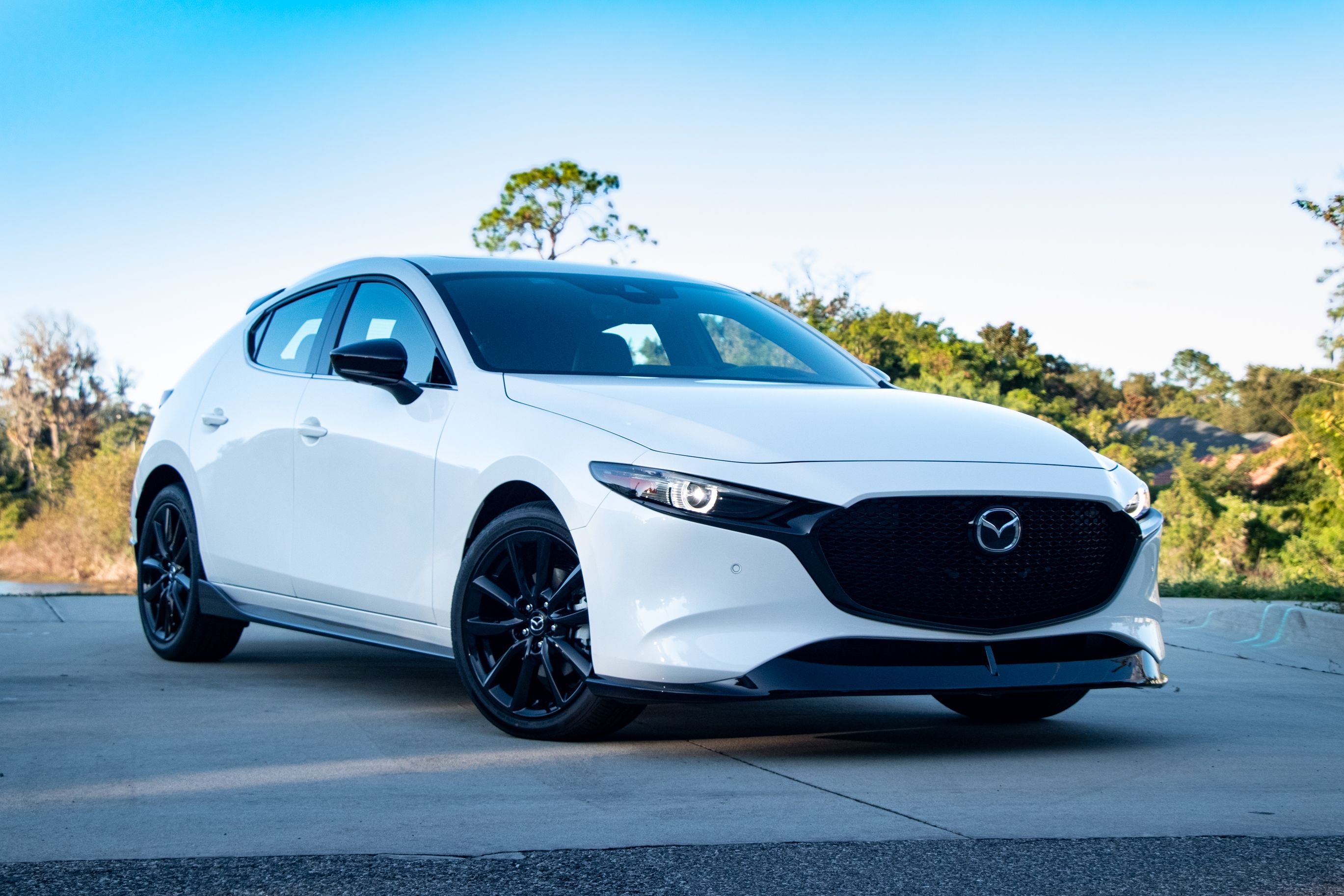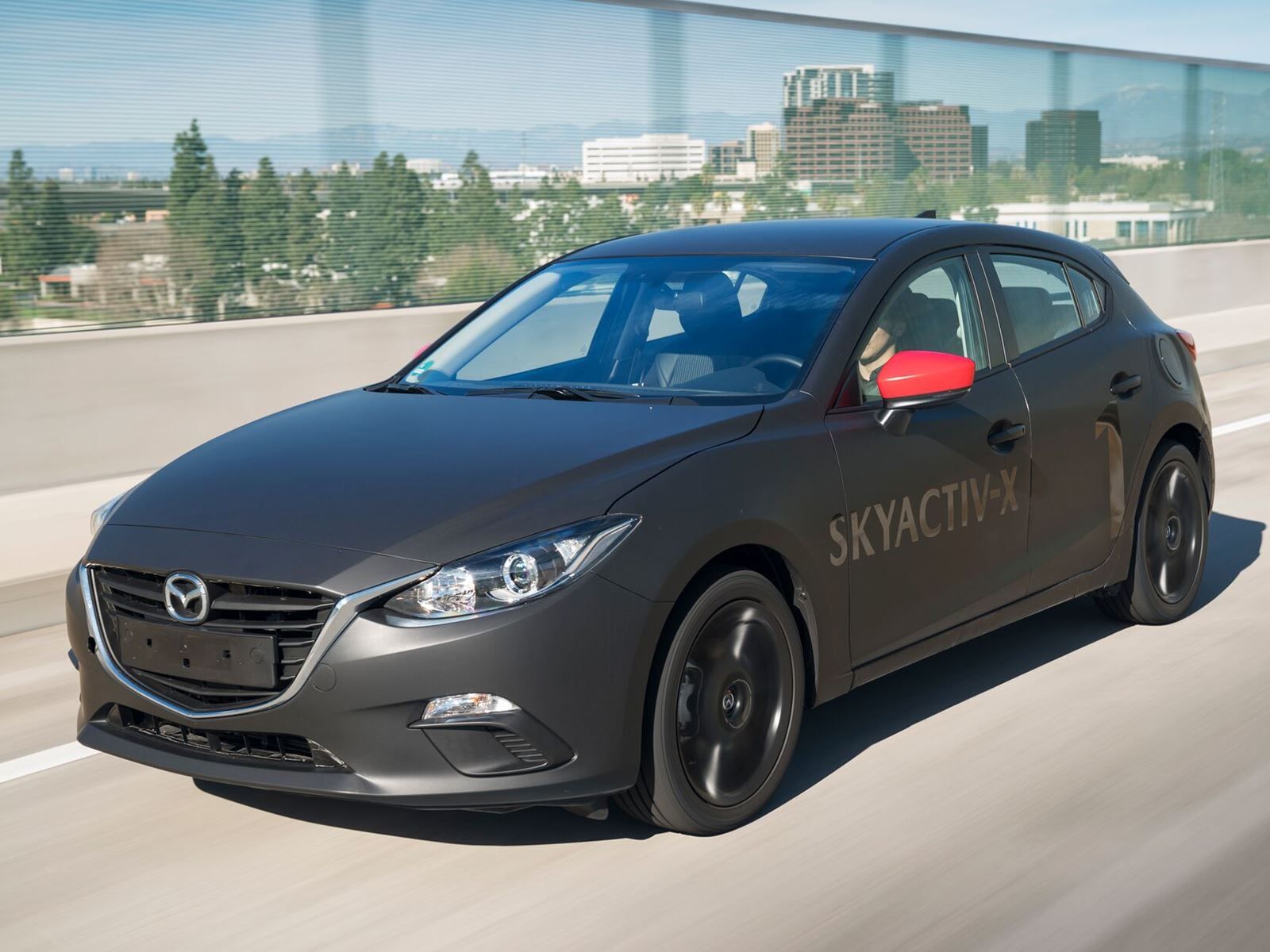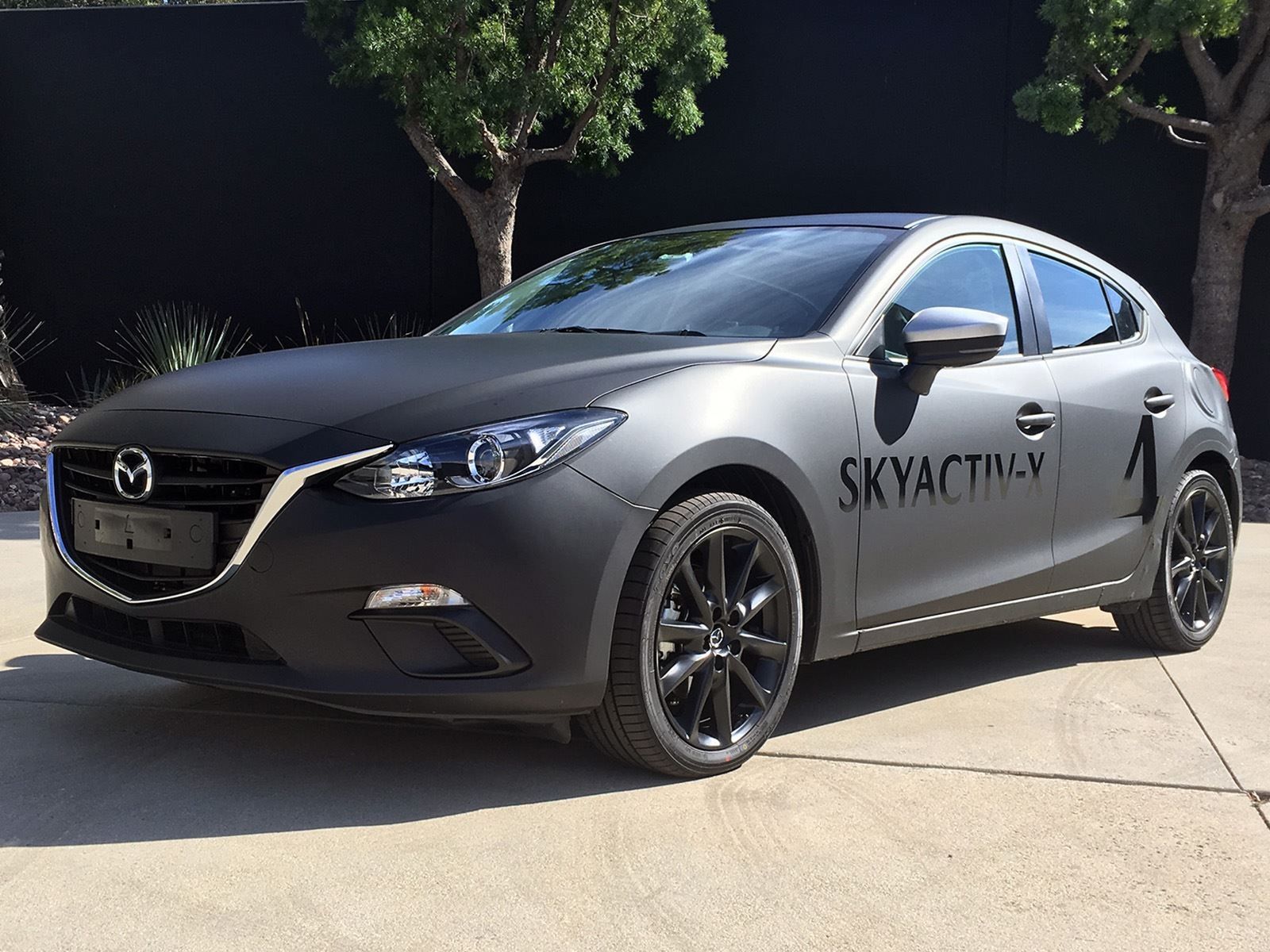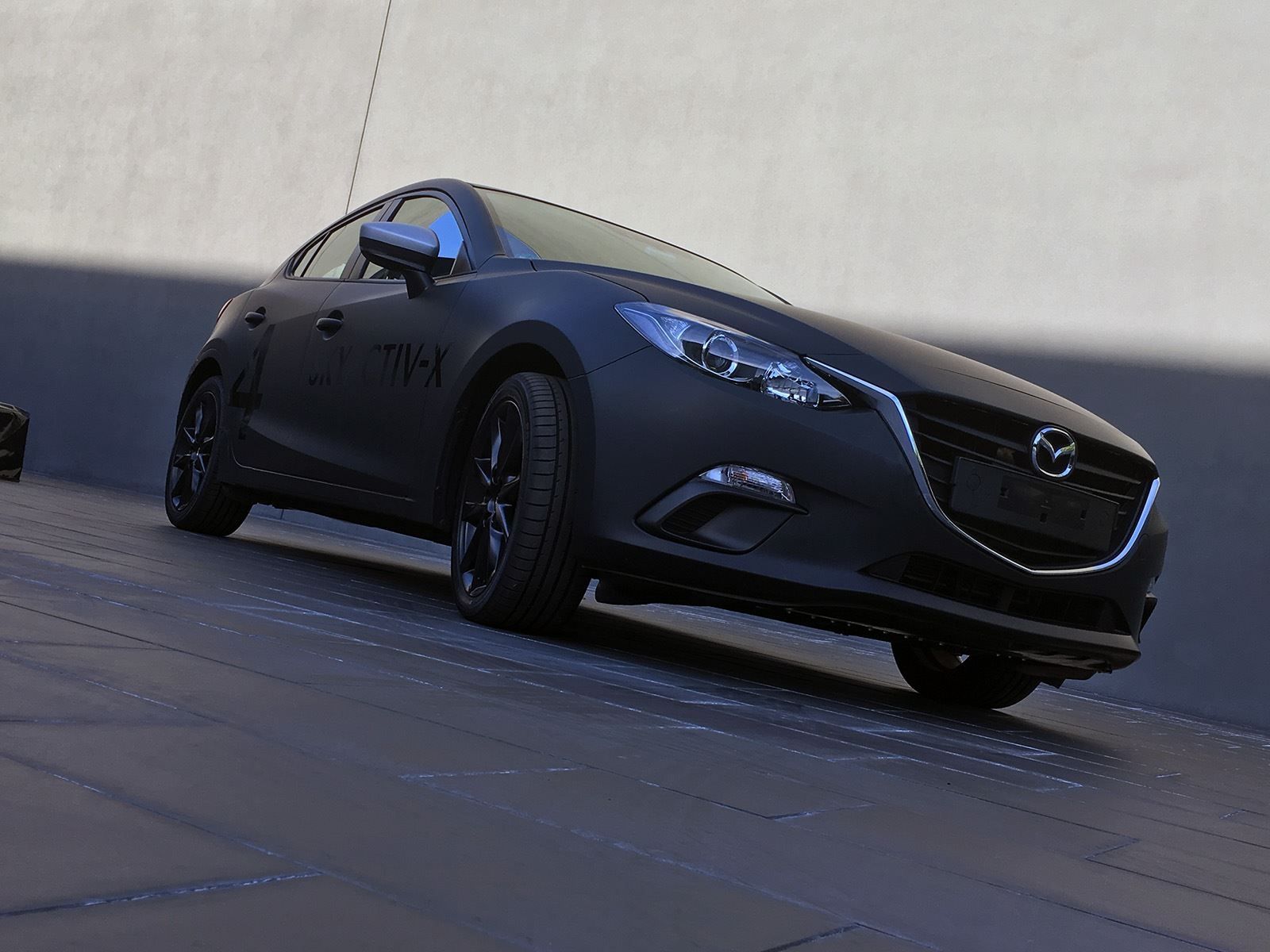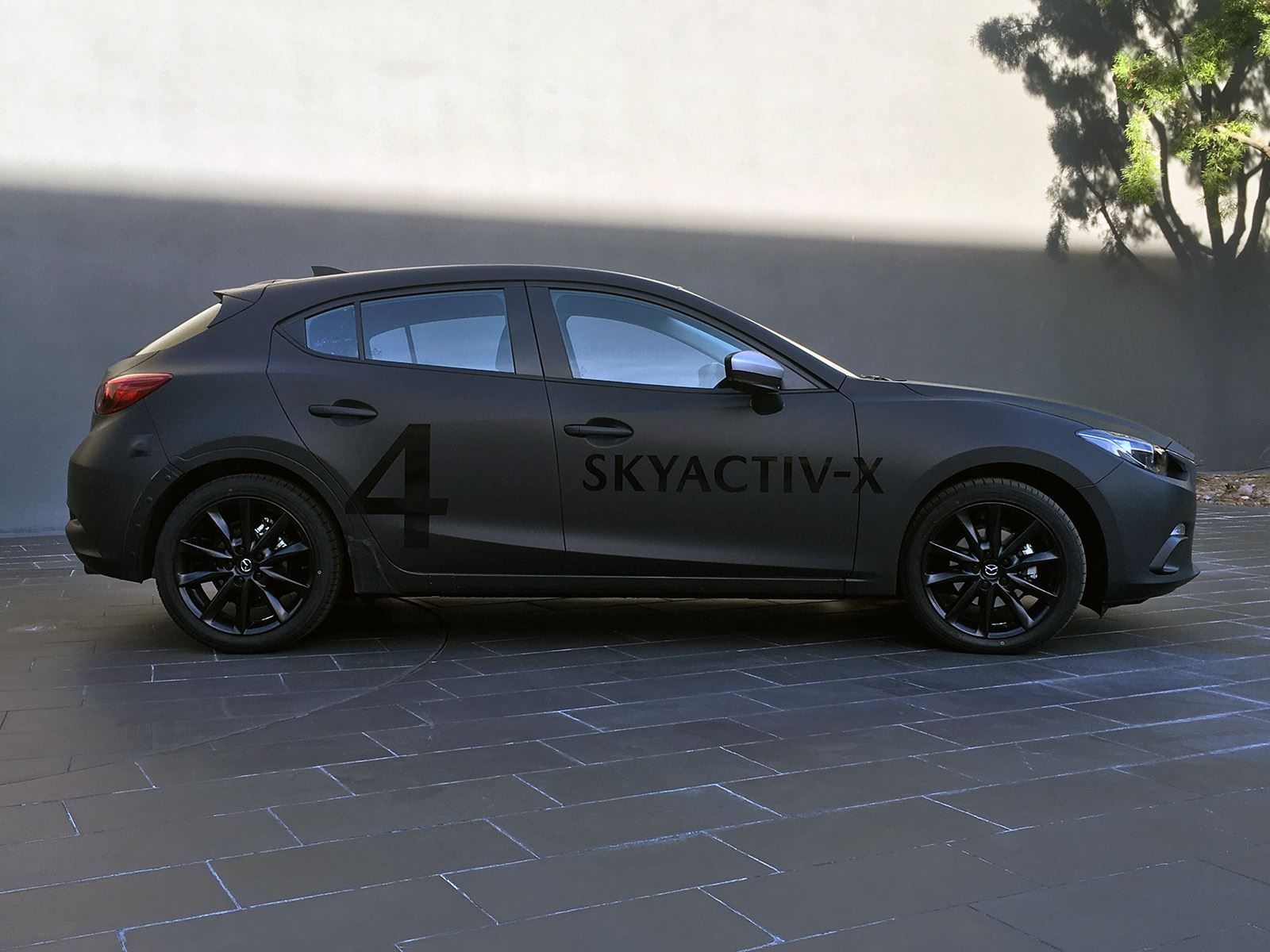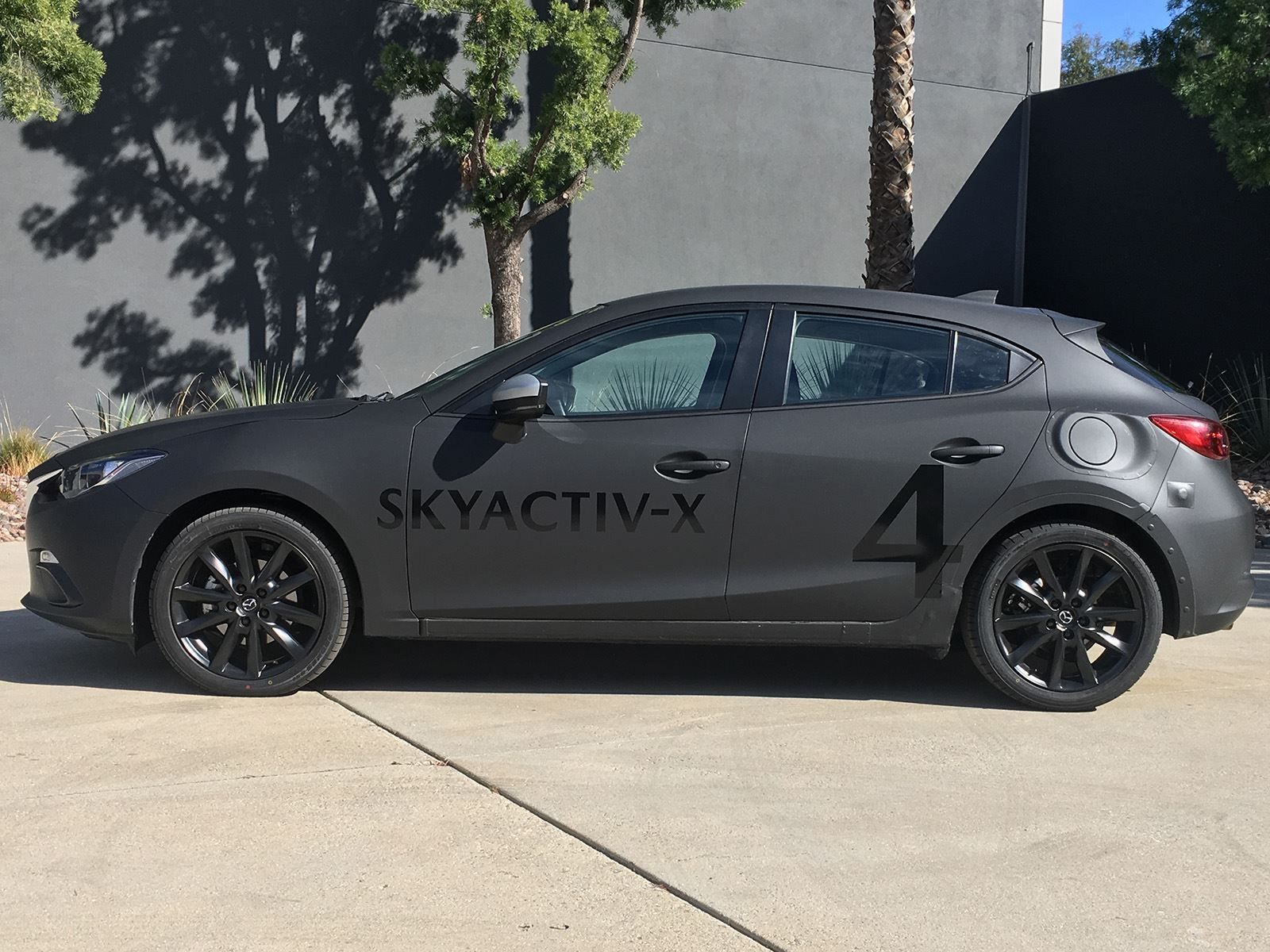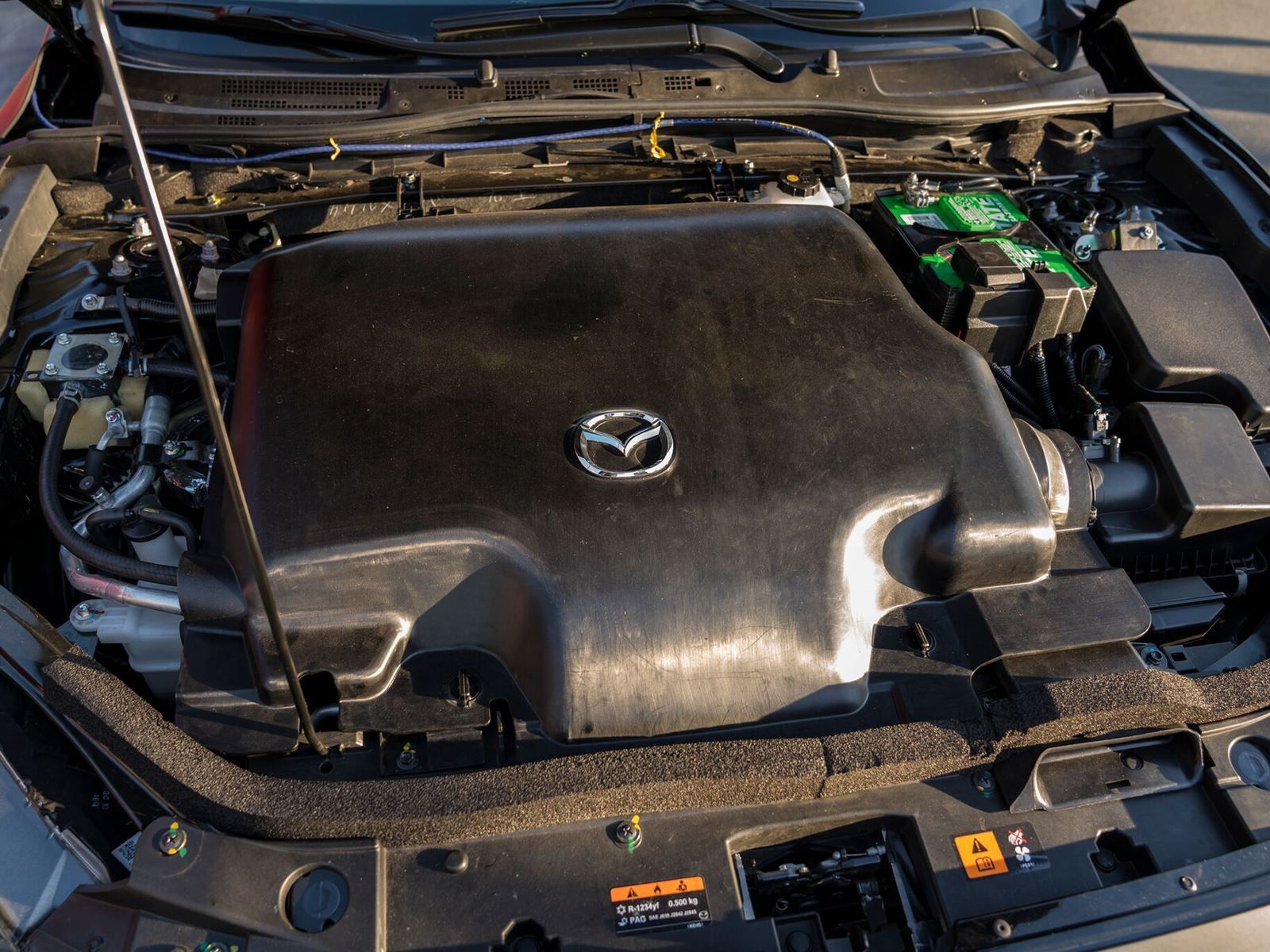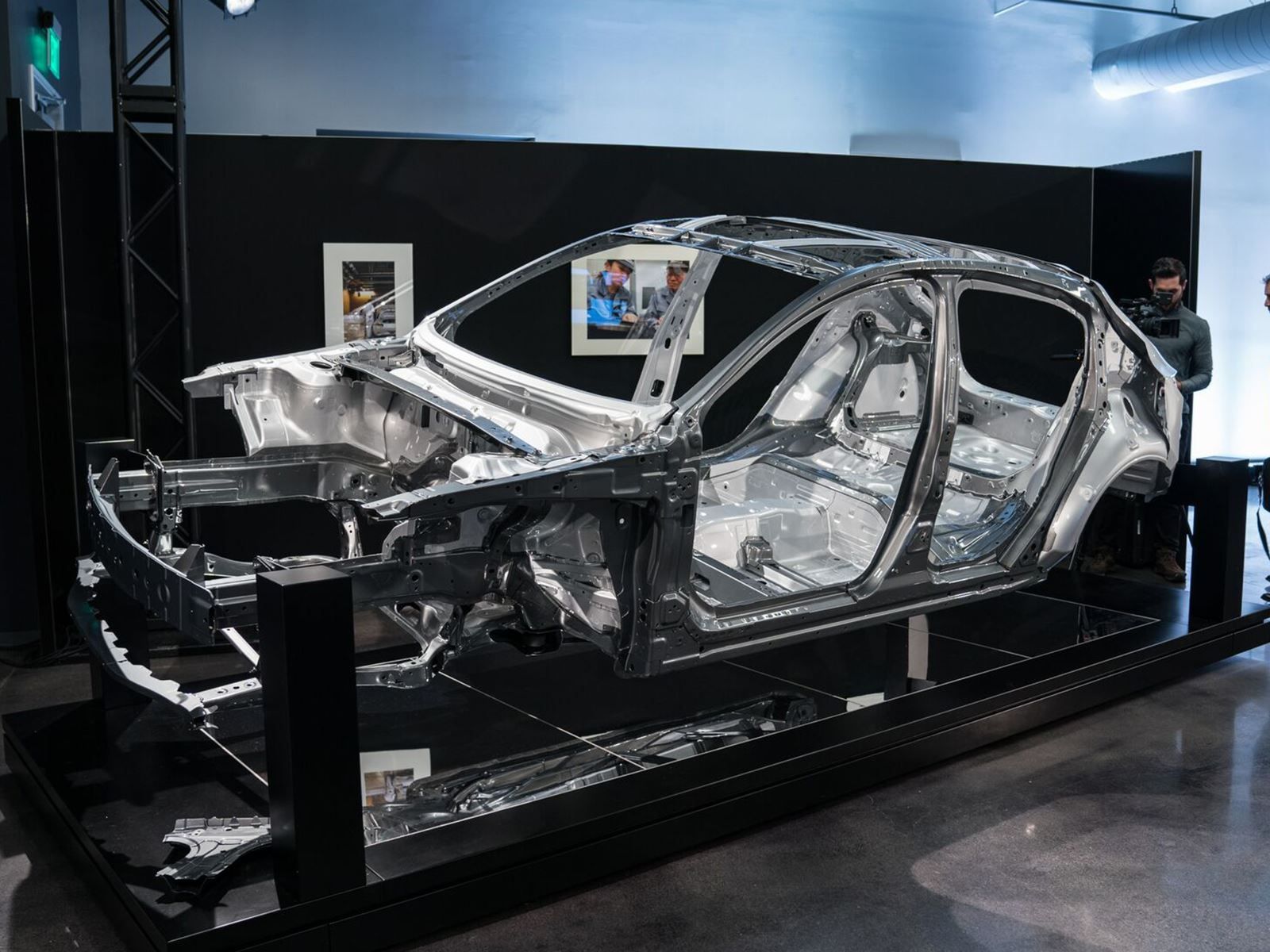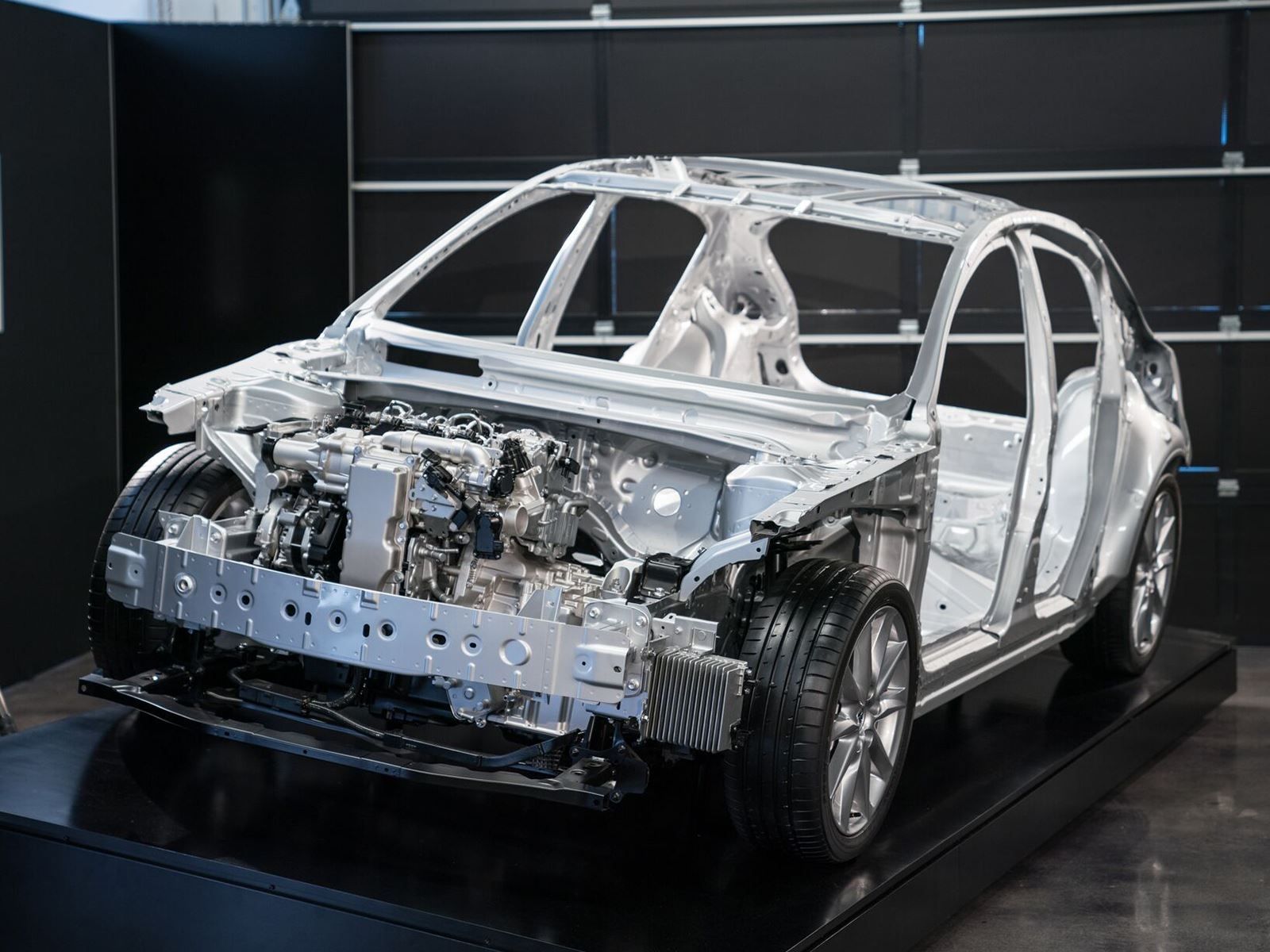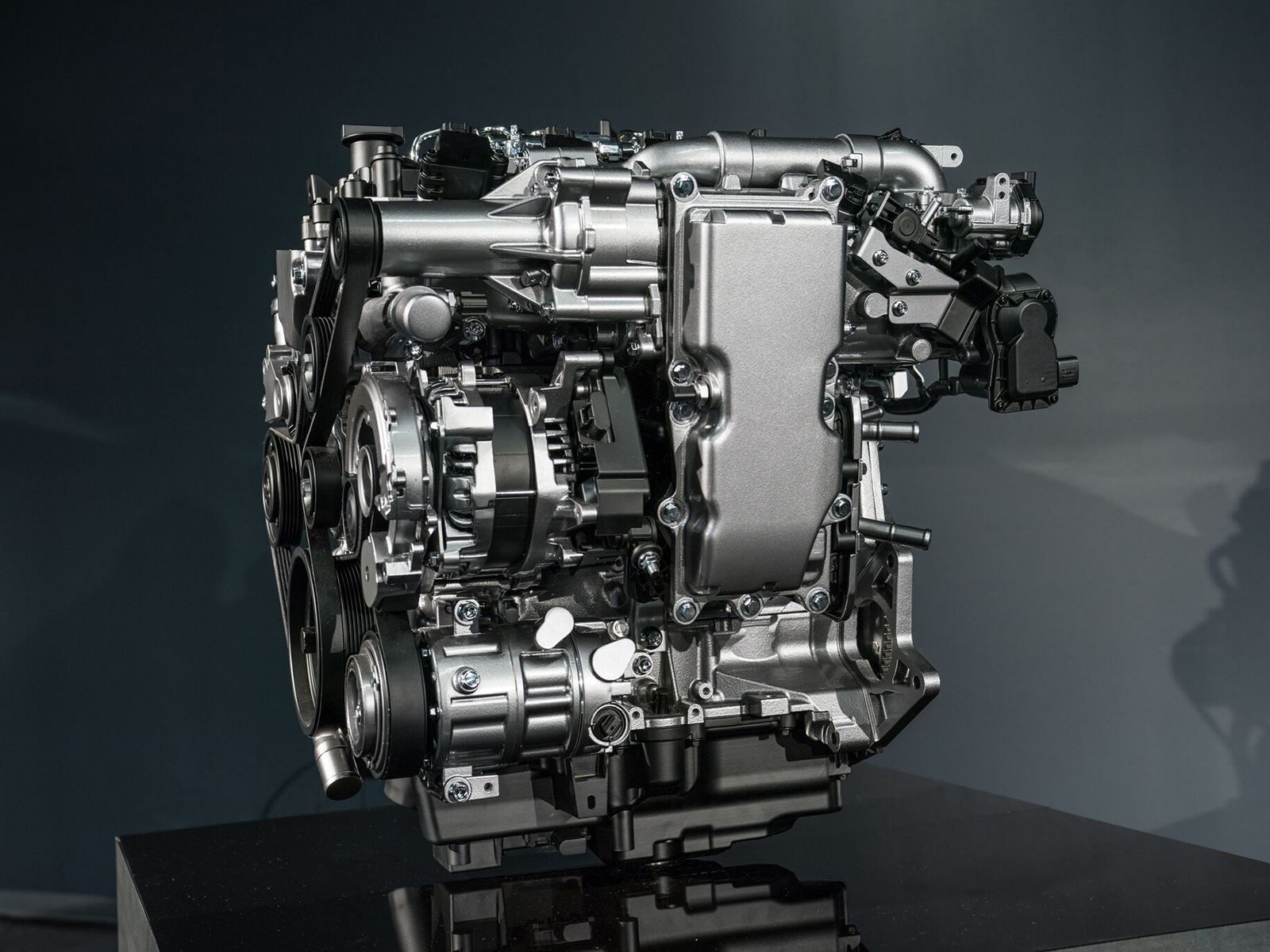Driving Mazda's SkyActiv X Renewed Our Hope For The Internal Combustion Engine
At its current point in history Mazda is the epitome of all of that's right with free market capitalism. In a perfect world companies would be locked into a battle for maximum ingenuity driven by the sheer ferocity of competition, but when you're the size of David in an industry of Goliaths, it takes creativity to stay ahead of the curve. While other companies can flex financial muscles and get their fleets up to snuff one battery pack at a time, Mazda must take a different approach.
Compared to its rivals, the Hiroshima-based automaker is a bug that refuses to be crushed under a set of Michelins. With slightly more than a 2% share of the US auto market and a budget to match, Mazda is forced to work with what it's got rather than drop cash on expensive electric-only divisions like Mercedes' EQ. Currently, that's a refined internal combustion engine (ICE) bestowed with clever fuel-saving modifications that Mazda dubs SkyActiv. But more heavy-handed regulations are on the horizon and SkyActiv's fuel-saving benefits will no longer be enough to keep the EPA at bay. Rather than cave and get into a financial mess by putting a rush order on the EVs, Mazda decided to rework the ICE.
It's rare nowadays that an automaker drags journalists to the shores of Laguna Beach to present fuel-saving tech that doesn't involve batteries and electric motors, but Mazda's new SkyActiv X engine was reason enough to make the trek. While postponing electrification may be off-putting to the more eco-conscious, Mazda justifies its decision to stick with gasoline by pointing out the inconvenient fact that greenhouse gases are still produced in order to motivate those EVs. Until our electrical grid becomes powered entirely by renewable sources of energy, the battle will always be about greenhouse gas reduction rather than all-out elimination.
And there's method to Mazda's madness too, because even if the ICE is pushed to the margins, it's technology like SkyActiv X that'll give us gearheads a reason to look forward to the coming years. In a nutshell, SkyActiv X works by adapting the ICE so that it can ignite gasoline using compression ignition like a more efficient diesel power plant without spewing dangerous NOx emissions associated with these oil burners. Think of SkyActiv X as a normal gasoline engine but with an unusually high 16:1 compression ratio (Mazda says this figure will likely change as production nears, but it won't stray far). Unlike a diesel, a SkyActiv X keeps its spark plugs.
Rather than use them as the source of ignition, the spark plugs instead become the catalyst that pushes the pressure threshold just over limit of combustion, giving the engine a greater degree of control over when the lean fuel and air mixture combusts. Much of the battle faced by the engineers involved giving the engine control over as many variables as possible because as you might imagine, a 2.0-liter four-cylinder that can run pump gas with an 87 octane rating through freakishly high compression ratios is highly susceptible to knock, aka engine cancer. Though Mazda can ensure that the ECU has plenty of control over many variables, it can't control the temperature, humidity, or oxygen content of the surrounding air.
A variation in any of these factors could invite the preignition demons to come knocking, which is why Mazda threw fancy hardware under the hood to allow the algorithms to execute combustion with ease and efficiency. Among these are pressure sensors in the cylinder that analyze and predict conditions and adjust spark ignition accordingly, high-pressure fuel injectors that spit fuel into the cylinder in multiple stages to allow the environment near the spark to contain more explosive fuel, a roots-style supercharger that allows more control over the flow of air into the engine, electric valve actuators to vary valve timing, and a cooled exhaust gas recirculation system to aid lean combustion.
In order to better control the temperature of the fuel/air mixture, Mazda gave the cylinder heads a unique shape that mixes the first spray of gasoline in a vortex before following a spray (or sprays) ensures the mixture near the spark plug is rich enough for quick combustion. The benefits to this unusual way of making gasoline go boom can be seen at the pump, not just because Spark-Controlled Compression Ignition (as Mazda calls it) is inherently better but because the engineers toiled to ensure the technology is practical over the same range of uses we expect out of regular SkyActiv power plants.
We know this because after Mazda got the complexities of the engine through our thick skulls, it sent us scurrying around Southern California in blacked-out Mazda3 prototypes for a taste of SkyActiv X. Despite being cloaked in body panels of the current Mazda3, our prototypes were underpinned by a new chassis that is quieter and more stable than the one it replaces. The suspension has also been altered to provide a more linear bump when traversing imperfections in the road surface while the seats have been completely redone following Mazda's deep study of human anatomy.
Despite being a hand-built prototype, the Mazda3 prototype felt like a refined treat on the roads of Orange County, but the real reward was the SkyActiv X under the hood. While SkyActiv X has yet to go through the barrage of EPA tests, Mazda fully expects it to yield fuel economy improvements in the neighborhood of 20% while peak torque improves by about 30%. Rough numbers include an output of 178 horsepower and 170 lb-ft of torque. That's more than enough to make rowing through all six gears on the optional manual transmission (yes, Mazda is giving us the choice to mate a primitively primal manual to its most cutting-edge engine) following a green light a real treat.
Thanks to additional sound insulation surrounding the power plant and tuning that enables the engine to seamlessly vary parameters to suit driver demands and atmospheric conditions, the fact that our Mazda3s are powered by a completely reinvented engine will escape any driver that doesn't care to look past the SkyActiv X badge. As much as our inner nerds would love SkyActiv X to advertise its unique fuel-saving and torque-enhancing features with more than a cool name, assimilation is kind of the point. If SkyActiv X marched to the beat of a different drum, mainstream customers could get skittish and miss the point.
We doubt they will though, because once SkyActiv X hits the market in 2019, likely under the hood of the revamped Mazda3, it'll be tough to find a more enticing four-wheeled package containing electron-free fuel-efficiency, upscale interior materials, a pretty grin ripped from the CX-5, inviting ergonomics and best of all, three pedals begging to kiss the firewall.

